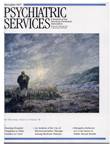Contemporary Treatment of Psychosis: Healing Relationships in the "Decade of the Brain"
Heraclitus once observed: "The waking have one world and a common one, but when asleep everyone turns away from it into his own world." Although he was referring to the dream, this quote could also be an apt description of psychosis.
Few conditions are more cunning, baffling, and powerful for those who suffer with it, as well as for those who treat it. Few conditions arouse more anger, despair, fear, frustration, humiliation, intolerance, and shame than psychosis, especially as witnessed in its more persistent and severe forms. And despite our recent, ongoing, and overshadowing breakthroughs in the psychopharmacologic treatment of psychosis, and cost containment under managed care, few conditions are more ignored or misunderstood or receive more inadequate care by us as a nation.
Contemporary Treatment of Psychosis is based mainly on presentations at a conference sponsored by the Menninger Clinic in June 1994 entitled "Psychodynamic Approaches to the Treatment of Psychotic Disorders: American and French Perspectives"; the papers were also published as the summer 1995 issue of the Bulletin of the Menninger Clinic. The editors of this short and generally satisfying volume seek to highlight "the contribution of contemporary psychodynamic thinking to the integrative treatment of psychotic disorders." Refreshingly, there is a good deal more integration of treatment approaches and perspectives than from the psychodynamic view alone.
However, the most important message, which underlies the entire book, is given in the epilogue. It provides a timely reminder and "affirmation of the central role of nurturing a therapeutic alliance with the psychotic patient and family through a clear and unequivocal psychological understanding and acceptance." This spirit of understanding and acceptance of work with persons who suffer from psychotic disorders is well reflected in the book as it deals with theoretical issues, family concerns, integrated treatment approaches, and sociocultural models of care.
I found the early chapters heavy going due to the abundance and sweep of theory and theoretical language (advanced membership in the object relations school and a nod to chaos-complexity theory would be helpful here). At best, we are all pilgrims in the unconscious, blind men describing the elephant. However, the terminology here might put off and confuse many clinicians, family members, and important others who would find the contents of this book extremely useful. Yet despite the technical language and rarefied metaphors, these chapters are also among the book's most intriguing when the authors are able to step away from their discussions of theory and briefly share their rich experiences of working with very ill people.
Subsequent chapters address the multilayered treatment and supervisory issues of the clinician who has a family member with schizophrenia and describe an integrated cognitive-behavioral and psychoeducational program for treating persons with schizophrenia. The latter could be used in a variety of inpatient and outpatient settings.
The later chapters discuss intrapsychic issues and social organizations for care and treatment of persons with psychosis in France. These presentations are fascinating, simultaneously familiar and novel, obvious and subtle in their messages.
Contemporary Treatment of Psychosis manages to generate considerable light in an area whose direct experience most of us are blind to, except in our deepest and darkest dreams. It gives encouragement to those of us who serve people with psychosis to work with the darkness and step into the unknown. It reminds us of the power and continued importance of the healing relationship.
Mr. Finneran is a dual diagnosis clinician who divides his time between the University of Massachusetts Medical Center and Community Healthlink in Worcester, Massachusetts.



